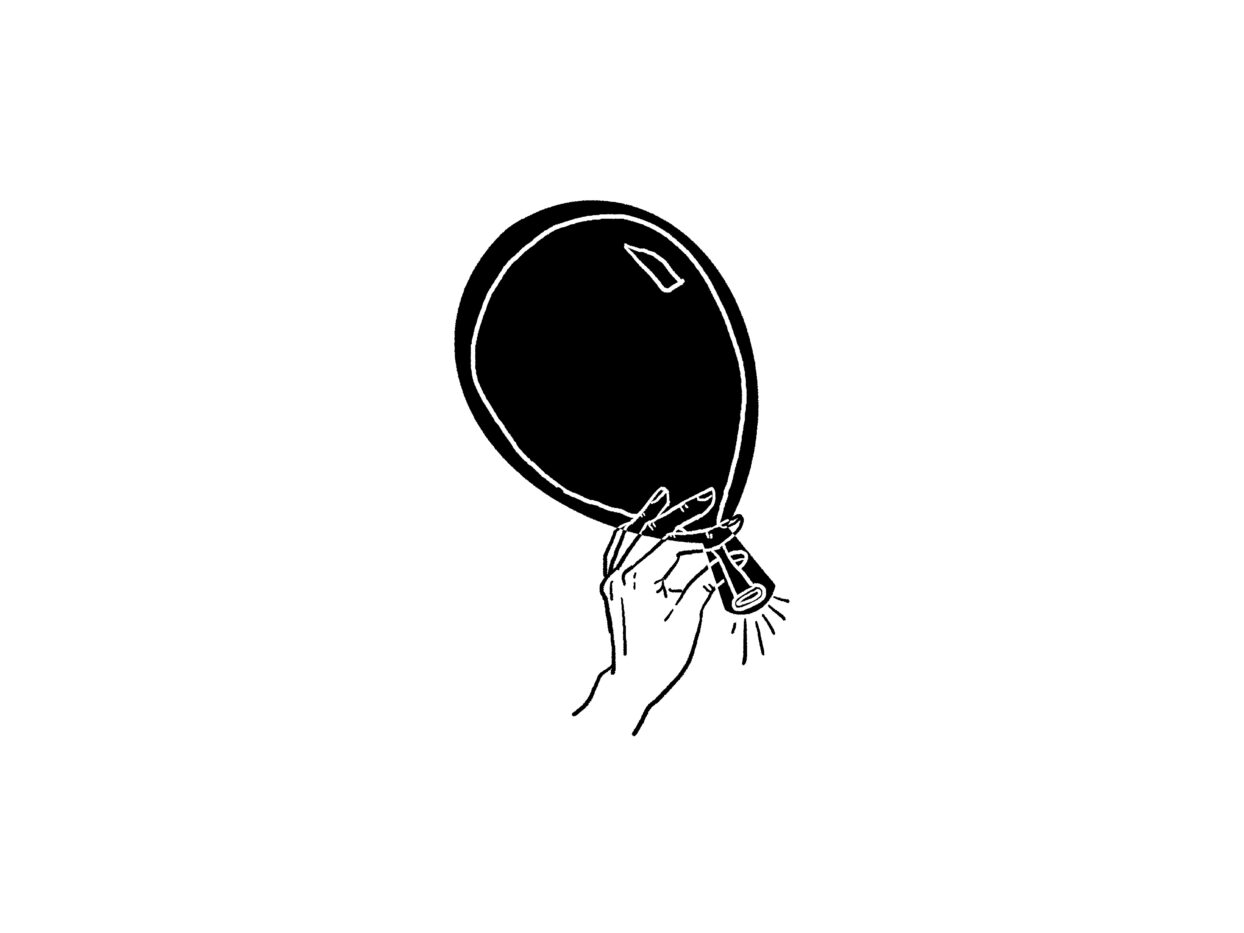
Image by Ivy Sanders Schneider

Image by Ivy Sanders Schneider
One of the least popular credits to my name on Apple Music is a track called “Prelude to ‘The Mystery Cheese-Ball,’” which was composed by the American experimental musician Joseph Byrd. By “composed,” I mean Byrd devised the simple instructions that constitute the piece: an unspecified ensemble blows up balloons, then releases the air from them as slowly as possible, in a chorus of squeaks and whines. The piece concludes once the balloons let out their last, poignant gasp. First performed in 1961 in Yoko Ono’s Manhattan loft, it seems likely that the second performance of “Mystery Cheese-Ball” didn’t occur until 2012, when my colleagues in the American Contemporary Music Ensemble and I recorded it in a Williamsburg studio. The questions posed by such an activity — What are instruments? What is form? What constitutes a performance? Are you serious? — are characteristic of the 1960s avant-garde.
Sixty years later, these questions, along with the presence of one or more balloons, still signify avant-gardism in contemporary music. Bethany Younge’s 2017 piece “Oxygen and Reality” is written for piccolo, electronics, and an assortment of balloons. Embodying the professionalized experimentalism found today at universities and contemporary music festivals, the piece is best experienced as a YouTube package: video, scrolling score, and a topical program note (“A body must know its own limits, or else it’s destined to vitiate in space” — hard to disagree). The performance rather than the music lingers in memory. Flutist Laura Cocks stares widely into the middle distance, their piccolo emitting frantic chuffs and sputters as a black balloon inflates and sags suggestively from its tip. They are a model New Music automaton carrying out orders. The music itself never approaches any limits or poses any significant questions; it’s a simulacrum of experimentation, relying on admirable documentation to deliver its payload straight to the tenure committee.
The preponderance of this kind of marketable avant-garde might lead one to despair of finding a real vanguard in composition. If it exists, it is not in any overarching style or movement, but in the work of individual artists stubbornly turning away from academic and institutional venues to follow their own auditory instincts into worlds of compelling weirdness.
On the cover of Sarah Hennies’s album The Reinvention of Romance (2020), a pink balloon perches unwittingly atop a bed of nails. The music, likewise, hovers between delicacy and simmering tension. Cello and percussion make awkward chamber music for 90 minutes, settling on a shared tempo only halfway through, and even then seem separated by an invisible wall. Hennies chooses her sounds with specificity and care, a damped harmonic pizzicato or bent glockenspiel “blue note” making familiar instruments vulnerable and uncanny, offsetting a high bowed vibraphone that bores into listeners’ skulls for ten minutes at a time. Though these sounds are rarely loud or dissonant, Hennies isn’t afraid to push them to the point of radical annoyance, testing the endurance of her players and audience. But these provocations are balanced by quietly blissful resolutions and monastic minutes of silence.
I like to think of art not as a teleological battalion of progress, with innovators on the front lines and everyone else bringing up the rear, but as a sphere, with infinite points of connection covering a gradually expanding surface. Composers, even the truly experimental ones, are all drawing chords and tangents on this sphere, trying to answer the question posed by a blank page.
Timo Andres, a composer and pianist, has written major works for the Boston Symphony, Carnegie Hall, the Barbican, the Takács Quartet, and others. He lives in Brooklyn.